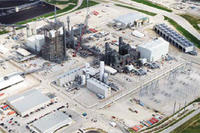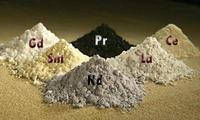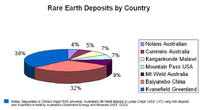-
The costs of using wind energy, natural gas for electricity virtually equal
The costs of using wind energy and natural gas for electricity are virtually equal when accounting for the full private and social costs of each, making wind a competitive energy source for the United States, according to a new study on the federal tax credit for wind energy. The analysis shows that wind energy comes within .35 cents per kWh when levelized over the 20-year life of a typical wind contract, compared on an equivalent basis to the full costs for natural gas-fired energy.
-
-
Cryptolocker has you between a back-up and a hard place

Cryptolocker, a particularly vicious form of malware that first appeared in September 2013, is a game-changer. After getting into your computer, it will encrypt all your data files, from your word documents to your photos, videos, and PDFs. It will then ask for a ransom of around $300 or 0.5 bitcoins to get them back. It has been one of the most commented developments in computer security circles in recent times, and copycats are appearing. The criminals are netting tens or hundreds of millions in ransoms, and at least some of the ill-gotten gains secured from Cryptolocker are likely to be reinvested. The criminals behind it will likely pay for access to bigger botnets to reach a wider base of victims. Future versions of the virus will in all likelihood be more prevalent and will extend across other platforms, like smartphones and tablets.
-
-
Russia leads, U.S. lags in construction of nuclear power reactors around the world
Has a new cold war developed between Russian and the United States in the twenty-first century? Many argue that it has — but with a more unconventional front of commercial nuclear energy contracts with developing countries. Russian companies are building 37 percent of new nuclear reactors around the world; U.S. companies build only 7 percent of new nuclear facilities.
-
-
Delaware launches cyber initiative
Delaware is joining the number of states that have decided to invest in a statewide cybersecurity workforce to combat the growing threat of cyberattacks directed at both private and public institutions.Delaware hopes its cyber initiative will accelerate current efforts to develop a stronger cyber workforce. The Delaware Cyber Initiative proposes $3 million for a collaborative learning and research network in the form of part research lab, part business park, dedicated to cyber innovation.
-
-
FDA proposes rules to prevent terror attack on U.S. food supply
Food terrorism could have drastic economic effects. A DHS risk assessment discovered that should a pathogen like foot-and-mouth disease be introduced to Great Plains ranchers, total damages would exceed $50 billion, affecting U.S. beef exports and dramatically reducing consumer demand for beef products.In order to prevent or reduce the risk from a potential terror attack on the nation’s food supply, the FDA proposed new rules to the Food Safety Modernization Act (FSMA).
-
-
Black markets for hackers increasingly sophisticated, specialized, and maturing
Black and gray markets for computer hacking tools, services and byproducts such as stolen credit card numbers continue to expand, creating an increasing threat to businesses, governments and individuals, according to a new study. One dramatic example is the December 2013 breach of retail giant Target, in which data from approximately forty million credit cards and 70 million user accounts was hijacked. Within days, that data appeared — available for purchase — on black market Web sites.
-
-
Conflicting views hamper N.C. preparation for sea level rise
Residents of North Carolina’s coastal towns are finding themselves increasingly caught in the cross-fire between local and state government regarding how to define future sea level rise resulting from global warming and the necessary measures needed to prepare for it. Due to a four-year moratorium on any action on the state level, area developers and homeowners have received no official input, and the lack of consensus has negative consequences for the health and prosperity of the region.
-
-
Controversial Mississippi power station to cut emissions by more than half

A new $5 billion state-of-the-art power facility is under construction Kemper County, Mississippi. It places a firm bet on the future of carbon-capture technology, and other technological advancements, including: it utilizes the gasification process with carbon in unique ways; it recycles treated wastewater to generate power; and it makes money from the carbon dioxide it has removed by selling it to oil companies for their own extraction. Critics say that investing so much money in untested technologies is too much of a gamble.
-
-
U.S. lags behind other countries in commercial use of drones
As the United States continues to explore regulations and safety guidelines for commercial UAVs, other countries have already adopted their use. Photographers, real estate agents, filmmakers, and news agencies in the United States want to use drones in their operations, but the FAA insists that rules addressing safety challenges associated with drones need to be in place before drones can share the sky with manned aircrafts.
-
-
Howard County, Md. attracts cybersecurity firms
Howard County, Maryland boasts a growing presence of cybersecurity firms and specialists at a time when the industry is gaining attention. The proximity of the county to government agencies has helped cybersecurity firms gain federal contracts, and the proximity of large cybersecurity consumers like the NSA offers cybersecurity firms in Howard County a large pool of cybersecurity specialists to select from when NSA employees decide to shift to the private sector.
-
-
Shale may offer long-term home for nuclear waste
About 77,000 tons of spent nuclear fuel currently sit in temporary above-ground storage facilities, and it will remain dangerous for tens or hundreds of thousands of years or longer. Experts say that since the U.S. government abandoned plans to develop a long-term nuclear-waste storage site at Yucca Mountain in Nevada in 2009, finding new long-term storage sites must be a priority. Shale deep under the Earth’s surface could be a solution. France, Switzerland, and Belgium already have plans to use shale repositories to store nuclear waste long-term.
-
-
Storm surges, rising sea levels threaten New Jersey’s beach-centered tourism industry
Sea level at the Jersey Shore could rise by thirty-one inches by the year 2050, posing a threat to New Jersey’s $38 billion tourism industry. Experts say that the potential for more harsh storms and sea level rise calls for better promotion of what else New Jersey has to offer tourists aside from the beach.
-
-
NERC drill finds U.S. grid preparedness insufficient
The North American Electric Reliability Corporation (NERC) reported that its recent GridEx II exercise has highlighted the fact that nearly all the utilities which took part in the two-day drill last November – a drill aiming to test the preparedness of the U.S. power grid to withstand cyber and physical attacks – admitted that their planning for such attacks was insufficient. NERC’s president, Gerry Cauley, said that protecting utilities against cyber and physical attacks should be considered in the context of measures taken to protect the grid from other threats. He noted that utilities are already hardening their systems against storms like Hurricane Sandy, while working to determine their vulnerability to solar activity that changes the earth’s magnetic field.
-
-
China's share of rare earths minerals declining amid falling demand

China still dominates the world’s rare earth elements market, but its share in global production has been steadily decreasing in recent years. A new study which shows a dramatic decline in these minerals’ prices has shaken he industry. In 2013, China accounted for 92.1 percent of high-tech rare earth oxides produced in the world. The percentage is still high, but it is a decline from 2010, when China accounted for 97.6 percent of global production of the mineral and fell to 95.1 percent in 2011.
-
-
Value of U.S. mineral production decreased in 2013

Last year, the estimated value of mineral production in the United States was $74.3 billion, a slight decrease from $75.8 billion in 2012. According to the U.S. Geological Survey’s annual Mineral Commodity Summaries 2014 report, the 2013 decrease follows three consecutive years of increases. Net U.S. exports of mineral raw materials and old scrap contributed an additional $15.8 billion to the U.S. economy.
-
More headlines
The long view
Ransomware Attacks: Death Threats, Endangered Patients and Millions of Dollars in Damages
A ransomware attack on Change Healthcare, a company that processes 15 billion health care transactions annually and deals with 1 in 3 patient records in the United States, is continuing to cause massive disruptions nearly three weeks later. The incident, which started on February 21, has been called the “most significant cyberattack on the U.S. health care system” by the American Hospital Association. It is just the latest example of an increasing trend.
Chinese Government Hackers Targeted Critics of China, U.S. Businesses and Politicians
An indictment was unsealed Monday charging seven nationals of the People’s Republic of China (PRC) with conspiracy to commit computer intrusions and conspiracy to commit wire fraud for their involvement in a PRC-based hacking group that spent approximately 14 years targeting U.S. and foreign critics, businesses, and political officials in furtherance of the PRC’s economic espionage and foreign intelligence objectives.
European Arms Imports Nearly Double, U.S. and French Exports Rise, and Russian Exports Fall Sharply
States in Europe almost doubled their imports of major arms (+94 per cent) between 2014–18 and 2019–23. The United States increased its arms exports by 17 per cent between 2014–18 and 2019–23, while Russia’s arms exports halved. Russia was for the first time the third largest arms exporter, falling just behind France.
LNG Exports Have Had No Impact on Domestic Energy Costs: Analysis
U.S. liquified natural gas (LNG) exports have not had any sustained and significant direct impact on U.S. natural gas prices and have, in fact, spurred production and productivity gains, which contribute to downward pressure on domestic prices.
